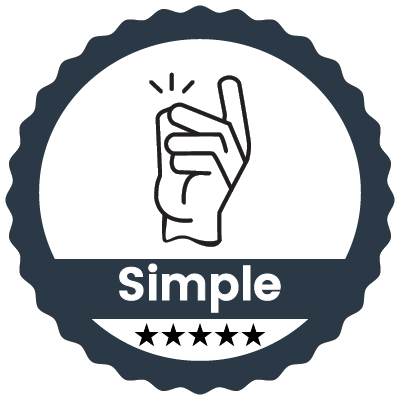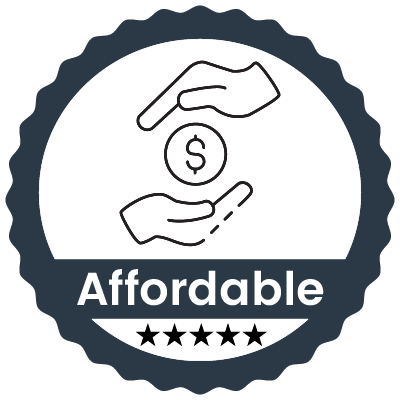Our comprehensive guide to Health Reimbursement Arrangements (HRA) for employers. In this resource, we'll delve into what HRAs are, how they work, the different types available, and the benefits they offer to both employers and employees.
- What is a Health Reimbursement Arrangement (HRA)?
- Types of HRAs:
- How HRAs Benefit Employers:
- How HRAs Benefit Employees:
- Setting Up an HRA:
- HRA Compliance and Regulations:
- Simplify paystubs with SecurePayStubs!
- Why Choose SecurePayStubs?
What is a Health Reimbursement Arrangement (HRA)?
A Health Reimbursement Arrangement (HRA) is an employer-funded health benefit plan that reimburses employees for qualified medical expenses. Unlike other types of health plans, such as Health Savings Accounts (HSAs) or Flexible Spending Accounts (FSAs), HRAs are entirely funded by the employer. Employees can use the funds to cover out-of-pocket healthcare costs, including deductibles, copayments, and certain medical services and prescriptions.
Types of HRAs:
Health Reimbursement Arrangements (HRAs) come in various forms, including Traditional HRAs, Qualified Small Employer HRAs (QSEHRA), and Individual Coverage HRAs (ICHRA).
Traditional HRA: This is the original form of Health Reimbursement Arrangement (HRA), where the employer sets aside funds to reimburse employees for eligible medical expenses. Any unused funds typically do not roll over from year to year.
Qualified Small Employer HRA (QSEHRA): Designed for small businesses with fewer than 50 full-time employees, QSEHRAs allow employers to reimburse employees for medical expenses, including insurance premiums, up to a certain annual limit.
Individual Coverage HRA (ICHRA): Introduced in 2020, ICHRAs enable employers of any size to reimburse employees for individual health insurance premiums and other medical expenses. This type of HRA offers more flexibility in plan design and is suitable for businesses looking to offer a defined contribution approach to healthcare benefits.
How HRAs Benefit Employers:
Cost control and predictability: Employers can set a specific budget for healthcare expenses, providing more control over costs.
Tax advantages: Employer contributions to HRAs are tax-deductible, reducing overall tax liability.
Flexibility in plan design: Employers can tailor HRA plans to meet the needs of their workforce, adjusting contribution amounts and covered expenses as necessary.
Attracting and retaining talent: Offering competitive healthcare benefits like HRAs can enhance employee satisfaction and attract top talent to the organization.
How HRAs Benefit Employees:
Increased control over healthcare spending: Employees have the freedom to use HRA funds for a wide range of medical expenses, giving them greater control over their healthcare dollars.
Tax advantages: Reimbursements from HRAs are typically tax-free for employees, providing additional savings on healthcare expenses.
Portability: In many cases, employees can retain unused HRA funds if they leave the company, providing a portable benefit option.
Access to quality healthcare: HRAs help employees afford necessary medical care without worrying about financial barriers, promoting overall health and well-being.
Setting Up an HRA:
Establishing an HRA involves setting employee eligibility criteria, determining contribution limits, creating a reimbursement process, and implementing communication strategies to inform employees about the plan details and updates.
Eligibility requirements for employees: Employers can establish criteria for employee eligibility, such as length of service or employment status.
Contribution limits: With Individual Coverage Health Reimbursement Arrangements (ICHRA), employers have the flexibility to determine the contribution amount towards their employees' healthcare expenses for each 12-month plan year. Unlike other arrangements, there are no set annual minimum or maximum contribution requirements for ICHRAs.
On the other hand, for Qualified Small Employer Health Reimbursement Arrangements (QSEHRAs), the IRS establishes maximum contribution limits annually. For the year 2023, the maximum employer contribution is capped at $5,850 for individual coverage, equivalent to $487.50 monthly, and $11,800 for family coverage, equivalent to $983.33 monthly. These limits ensure compliance with IRS regulations and provide a clear framework for employers to determine their contribution amounts, supporting their employees' healthcare needs effectively.
Reimbursement process: Employers should establish clear procedures for employees to submit claims and receive reimbursements for qualified expenses.
Communication strategies: Employers should communicate the details of the HRA plan effectively to employees, including eligibility requirements, covered expenses, and how to access funds. Additionally, employers should inform employees about any changes to contribution limits and other relevant updates.
HRA Compliance and Regulations:
IRS regulations and requirements: HRAs must comply with IRS rules regarding plan design, contribution limits, and eligible expenses to maintain tax-favored status.
ERISA compliance: Employers offering HRAs may need to comply with the Employee Retirement Income Security Act (ERISA), which sets standards for employee benefit plans.
HIPAA compliance: HRAs that involve the use or disclosure of protected health information (PHI) must adhere to the Health Insurance Portability and Accountability Act (HIPAA) privacy and security rules.
ACA considerations: HRAs must comply with the Affordable Care Act (ACA) rules, including provisions related to annual limits on essential health benefits and preventive care coverage.
Conclusion:
Our resource guide has covered essential aspects of Health Reimbursement Arrangements (HRAs), highlighting their flexibility, tax advantages, and benefits for both employers and employees. We encourage employers to consider implementing HRAs as a valuable healthcare benefit option for their workforce, offering cost control, tax benefits, and increased healthcare access.
Simplify paystubs with SecurePayStubs!
Choose SecurePayStubs for a seamless online paystub generator dedicated solely to ensuring accuracy and compliance.
Why Choose SecurePayStubs?
User-Friendly Interface: Our intuitive tools make paystub generation quick and easy, saving you time and effort.
Accurate Calculations: Rest assured knowing that our system ensures precise calculations for taxes, deductions, and net pay, reducing the risk of errors.
Customizable Templates: Choose from a variety of templates to create pay stubs that reflect your company's branding and requirements.
Secure Data Handling: We prioritize the security and confidentiality of your information, ensuring it is protected with the highest standards of security.
Visit SecurePayStubs today to effortlessly create accurate pay stubs tailored to your business needs.
This article has been updated from its original publication date of May 30, 2024.



